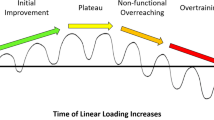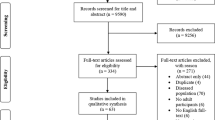Abstract
We used ratios of EMG amplitudes to characterize neural strategies of motoneuron recruitment for seven bilateral muscle groups of the back and neck during nine motor tasks to discriminate patients who sustained sprain/strain injuries (n=61) from a control population (n=400). Compensatory relationships between muscle pairs improved the predictability of hypoactivity or hyperactivity based on the probability distribution of muscle ratios obtained from uninjured subjects. We defined severity of hypoactive or hyperactive EMG activity by (a) the number of ratios that exceeded the normal range (95% confidence interval), (b) the compensatory relationship between these muscle pairs during each motor task, and (c) the consistency and frequency of hypoactivity or hyperactivity across nine motor tasks. Accuracy of the classification system was 88% with a specificity of 90% and a sensitivity of 70%. Between-session reliability for the overall classification of 40 controls and 44 patients was 93%. These results indicate that muscle ratios can objectively quantify altered strategies of motoneuron recruitment attributed to muscle trauma and pain common to spain/strain injuries.
Similar content being viewed by others
References
Ahern, D. K., Follick, M. J., Council, J. R., Laser-Wolston, N., and Litchman, H. (1988). Comparison of lumbar paravertebral EMG patterns in chronic low back pain patients and nonpatient controls.Pain 34: 153–160.
Arena, J. G., Sherman, R. A., Bruno, G. M., and Young, T. R. (1989). Electromyographic recordings of 5 types of low back pain subjects and non-pain controls in different positions.Pain 37: 57–65.
Arena, J. G., Sherman, R. A., Bruno, G. M., and Young, T. R. (1990). Temporal stability of paraspinal electromyographic recordings in low back pain and non-pain subjects.Int. J. Psychophysiol. 9: 31–37.
Armstrong, R. B., Warren, G. L., and Warren, J. A. (1991). Mechanisms of exercise-induced muscle fibre injury.Sports Med. 12: 184–207.
Biedermann, H. J., Shanks, G. L., Forrest, W. J., and Inglis, J. (1991). Power spectrum analyses of electromyographic activity: Discriminators in the differential assessment of patients with chronic low-back pain.Spine 16: 1179–1184.
Cram, J. R., and Engstrom, D. (1986). Patterns of neuromuscular activity in pain and nonpain patients.Clin. Biofeed. Health 9: 106–115.
Fisher, B. D., Baracos, V. E., and Shnitka, T. K. (1990). Ultrastructural events following acute muscle trauma.Med. Sci. Sports Exerc. 22: 185–193.
Friden, J., and Lieber, R. L. (1992). Structural and mechanical basis of exercise-induced muscle injury.Med. Sci. Sports Exerc. 24: 521–530.
Garrett, W. E. (1990). Muscle strain injuries: Clinical and basic aspects.Med. Sci. Sports Exerc. 22: 436–443.
Hemingway, M. A., Biedermann, H. J., and Inglis, J. (1995). Electromyographic recordings of paraspinal muscles: Variations related to subcutaneous tissue thickness.Biofeed. Self Regul. 20: 39–49.
Hodgson, J. A., Ibrahim, K. F., and McLellan, D. L. (1983). The relationship between soleus and gastrocnemius muscle activity in human movement.J. Physiol. 23.
Hodgson, J. A., Bodine-Fowler, S. C., Roy, R. R., de Leon, R. D., de Guzman, C. P., Koslovskaya, I., Sirota, M., and Edgerton, V. R. (1991). Changes in recruitment of rhesus soleus and gastrocnemius muscles following a 14-day spaceflight.Physiologist 34: s102–103.
Hutchison, D. L., Roy, R. R., Hodgson, J. A., and Edgerton, V. R. (1989). EMG amplitude relationships between cat soleus and medial gastrocnemius during various motor tasks.Brain Res. 502: 223–244.
Hutton, R. S., and Atwater, S. W. (1992). Acute and chronic adaptations of muscle proprioceptors in response to increased use.Sports Med. 14: 406–421.
Hutton, R. S., Kaiya, K., Suzuki, S., and Watanabe, S. (1987). Post-contraction errors in human force production are reduced by muscle stretch.J. Physiol. 393: 247–259.
Lieber, R. L., Woodburn, T. M., and Friden, J. (1991). Muscle damage induced by eccentric contractions of 25% strain.J. Appl. Physiol. 70: 2498–2507.
Mayer, T. G., Kondraske, G., Mooney, V., Carmichael, T. W., and Butsch, R. (1989). Lumbar myoelectric spectral analysis for endurance assessment: A comparison of normals and deconditioned patients.Spine 14: 986–991.
Nouwen, A., Van Akkerveeken, P. F., and Versloot, J. M. (1987). Patterns of muscular activity during movement in patients with chronic low-back pain.Spine 12: 777–782.
Parkkola, R., Rytokoski, U., and Kormano, M. (1993). Magnetic resonance imaging of dics and trunk muscles in patients with chronic low back pain and healthy control subjects.Spine 18: 830–836.
Proske, U., and Morgan, D. L. (1987). Tendon stiffness: Methods of measurement and significance for control of movement.J. Biomech. 20: 75–82.
Roy, R. R., Hutchison, D. L., Pierotti, D. J., Hodgson, J. A., and Edgerton, V. R. (1991a). EMG patterns of rat ankle extensors and flexors during treadmill locomotion and swimming.J. Appl. Physiol. 20: 2522–2529.
Roy, R. R., Baldwin, K. M., and Edgerton, V. R. (1991b). The plasticity of skeletal muscle: Effects of neuromuscular activity.Exerc. Sports Sci. Rev. 19: 269–312.
Roy, S. H., DeLuca, C. J., and Casavant, D. A. (1989). Lumbar muscle fatigue and chronic lower back pain.Spine 14: 992–1001.
Roy, S. H., DeLuca, C. J., Snyder-Mackler, L., Emley, M. S., Crenshaw, R. L., and Lyons, J. P. (1990). Fatigue, recovery and low back pain in varsity rowers.Med. Sci. Sports Exerc. 22: 463–469.
Russell, B., Dix, D. J., and Haller, D. L. (1992). Repair of injured skeletal muscle: A molecular approach.Med. Sci. Sports Exerc. 24: 189–196.
Schouenborg, J., Weng, H. R., and Holmberg, H. (1994). Modular organization of spinal nociceptive reflexes: A new hypothesis,NIPS 9: 261–265.
Sihvonen, T., Partanen, J., Hanninen, O., and Soimakallio, S. (1991). Electric behavior of low back muscles during lumbar pelvic rhythm in low back pain patients and healthy controls.Arch. Phys. Med. Rehab. 72: 1080–1087.
Taylor, D. C., and Dalton, J. D. (1993). Experimental muscle strain injury.Am. J. Sports Med. 21: 190–194.
Thompson, S., Gregory, J. E., and Proske, U. (1990). Erros in force estimation can be explained by tendon organ desensitization.Exp. Brain Res. 79: 365–372.
Wolf, S. L., and Basmajian, J. V. (1978). Assessment of paraspinal electromyographic activity in normal subjects and chronic back pain patients using muscular biofeedback device.International Series in Biomechanics IV-b, University Park Press, Baltimore, MD, pp. 319–324.
Wolf, S. L., Nacht, M., and Kelly, J. L. (1982). EMG feedback training during dynamic movement for low back pain patients.Behav. Ther. 13: 395–406.
Author information
Authors and Affiliations
Rights and permissions
About this article
Cite this article
Edgerton, V.R., Wolf, S.L., Levendowski, D.J. et al. Evaluating patterns of EMG amplitudes for trunk and neck muscles of patients and controls. Int J Rehab Health 2, 1–18 (1996). https://doi.org/10.1007/BF02213560
Issue Date:
DOI: https://doi.org/10.1007/BF02213560




